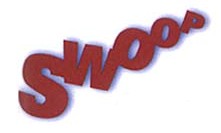
"We want our mascot not only to involve the crowd, but to interact with the cheerleaders and band as well," emphasizes Marc Amicone, director of athletics marketing, who coordinated the mascot's development. "He should be somewhat fierce, but still appealing to youngsters. And the hawk may also represent the U at public events such as parades, golf tournaments, etc." Salt Laker Michelle Signorello designed the initial costume in the fall. Then, after several refinements, a Salt Lake costume company produced the final product in December for the Huntsman Center debut. Alinco, which is headed by Terry Allen ex'69, has outfitted such popular NBA mascots as the Seattle SuperSonics' Squatch and the Utah Jazz's Bear (who was on the panel of judges which selected the person to become Utah's hawk figure). Alinco works with colleges and high schools across the country on mascot garb. Utah's hawk is being "played" by a U of U student with previous experience in roles similar to a mascot's. He remains anonymous, but he is a business major. The hawk's name will be chosen through a campus contest.